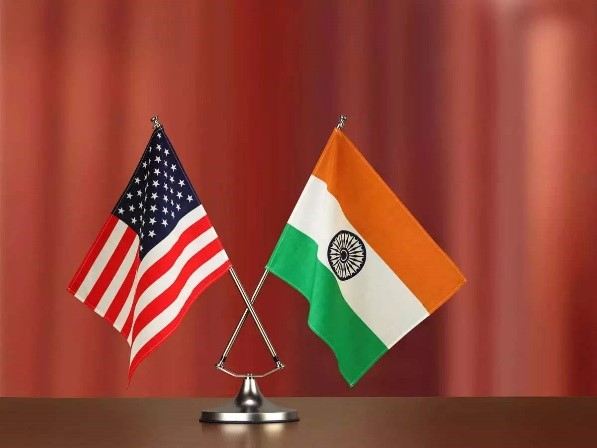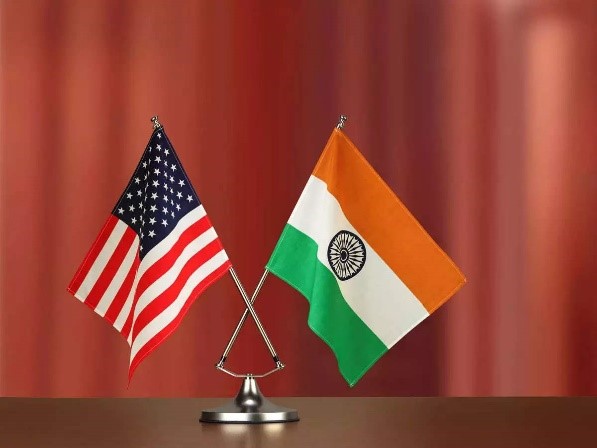Description
 Disclaimer: Copyright infringement not intended.
Disclaimer: Copyright infringement not intended.
Context
- India and the US are set to take up several sticky trade issues at the trade policy forum meet that begins today (January 12).
- These include New Delhi’s long-pending demand seeking the restoration of the Generalised System of Preferences (GSP) that was revoked under former US President Donald Trump to Washington’s objection to India’s laptop import monitoring system.
Why is the trade policy forum meeting crucial?
- The US is India’s single largest trade partner and the only large economy where India exports more than it imports.
- At a time when goods exports are slowing in the West due to the Russia-Ukraine war, India predominantly depends on the US demand for export earnings and is also banking on the US-led Indo-Pacific Economic Framework for Prosperity (IPEF) trade pact to counter China’s mammoth influence on trade in Asia.
- With the US firms increasingly adopting China plus one policy and the ongoing supply chain reset, closer trade ties with the US could help India attract more foreign direct investment (FDI).
- Moreover, in the absence of a free trade agreement (FTA) with the US, such trade policy forum meetings are among the few platforms to resolve trade tensions and push for tangible export growth.
Why is restoration of GSP a key demand from Indian exporters?
- India had lost GSP benefits in 2019 when former US President Donald Trump began introducing radical trade measures citing the widening trade gap between India and China.
- Trump’s trade war was detrimental to New Delhi as it was the largest beneficiary of GSP status in 2017 with $5.7 billion worth of imports into the US given duty-free status.
- While it was widely expected that the US under the Joe Biden administration would reverse Trump-era measures, GSP was not restored. GSP restoration was discussed during the last India-US trade policy forum last year too.
Why is the US concerned about India’s laptop import monitoring system?
- Even as India clarified that it will not impose restrictions on laptop imports, the US continues to raise questions on the purpose of the “monitoring system” that has been proposed as an alternative.
- This is likely to be taken up in the trade policy meeting as such measures are seen as a non-tariff measure. India has said that the aim to impose such a system is to ensure that the IT products come from “trusted geographies”.
How is India looking to boost service trade with the US?
- India is seeking a liberal visa regime to boost service trade. India’s services exports have been on the rise and healthy export numbers largely due to the US demand have helped lower the current account deficit.
- However, visa delays for Indians surged to record levels during Covid-19.
- Visas are a key concern for the US as immigration is a politically sensitive issue in the election year.

What is the totalisation agreement that India is seeking?
- India is also set to reiterate its longstanding demand for a totalisation agreement that will provide social security to Indian professionals in the US.
- A totalisation agreement or social security agreement will eliminate dual social security deductions in India and the US.
- The agreement will particularly benefit the Indian IT sector workforce who are working in the US and paying social security but are unable to get the benefit.
- The proposed agreement the US had sought data from India about different social security schemes being implemented and that India has provided all the data from different ministries, including labour.
|
"CHINA PLUS ONE" POLICY
The "China Plus One" policy is a strategic approach where businesses diversify operations beyond China to mitigate risks, reduce dependence on a single country, and tap into emerging markets. It involves establishing manufacturing or business operations in other countries, particularly in regions with favorable conditions, to optimize supply chains and navigate geopolitical uncertainties.
GENERALIZED SYSTEM OF PREFERENCES (GSP)
The Generalized System of Preferences (GSP) is a trade preference program aimed at promoting economic development in developing countries by allowing them to export certain goods to developed countries with reduced or zero tariffs. GSP operates on a non-reciprocal basis, offering preferential treatment to eligible products from beneficiary countries without requiring equivalent trade benefits in return. The program covers a range of products, and eligibility criteria are periodically reviewed. Various countries, including the United States, the European Union, and Japan, have their own GSP programs with specific rules and product coverage. GSP contributes to fostering economic ties and helping developing countries integrate into the global economy.
|
|
PRACTICE QUESTION
Q. Examine recent developments in the India-U.S. trade relationship, focusing on policy changes, challenges, and strategies to enhance economic cooperation. Evaluate the impact of trade agreements, considering geopolitical influences and global implications.
|





 Disclaimer: Copyright infringement not intended.
Disclaimer: Copyright infringement not intended.







